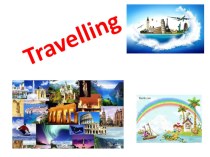- Главная
- Разное
- Бизнес и предпринимательство
- Образование
- Развлечения
- Государство
- Спорт
- Графика
- Культурология
- Еда и кулинария
- Лингвистика
- Религиоведение
- Черчение
- Физкультура
- ИЗО
- Психология
- Социология
- Английский язык
- Астрономия
- Алгебра
- Биология
- География
- Геометрия
- Детские презентации
- Информатика
- История
- Литература
- Маркетинг
- Математика
- Медицина
- Менеджмент
- Музыка
- МХК
- Немецкий язык
- ОБЖ
- Обществознание
- Окружающий мир
- Педагогика
- Русский язык
- Технология
- Физика
- Философия
- Химия
- Шаблоны, картинки для презентаций
- Экология
- Экономика
- Юриспруденция
Что такое findslide.org?
FindSlide.org - это сайт презентаций, докладов, шаблонов в формате PowerPoint.
Обратная связь
Email: Нажмите что бы посмотреть
Презентация на тему к уроку 10 класс(работа уч-ся)
Содержание
- 2. Alicante-Elche Airport (Spanish: Aeropuerto de Alicante-Elche, Valencian:
- 3. In 2011, Alicante Airport handled 9,913,764 passengers,
- 4. El Altet airport opened on 4 May
- 5. In 2011, the new terminal was opened
- 6. Historically, up until 2003, Iberia was the
- 7. Historically, up until 2003, Iberia was the
- 8. Terminal 1 (styled as T1) had 38
- 9. Terminal 2 (styled as T2) had 14
- 10. In 2012, the number of passengers decreased
- 11. An Aer Lingus Airbus A320-200An EasyJet Airbus
- 12. Скачать презентацию
- 13. Похожие презентации
Alicante-Elche Airport (Spanish: Aeropuerto de Alicante-Elche, Valencian: Aeroport d'Alacant-Elx), (IATA: ALC, ICAO: LEAL), originally named El Altet, is the sixth busiest airport in Spain based on passenger numbers, and the main airport for the Valencian Community
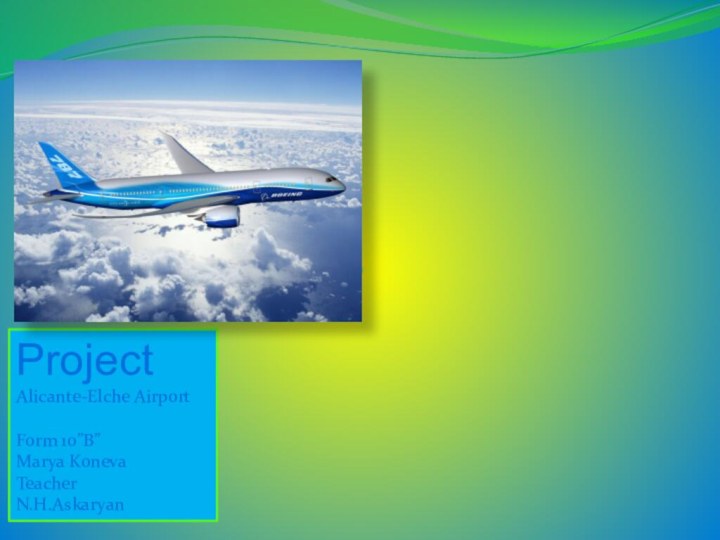
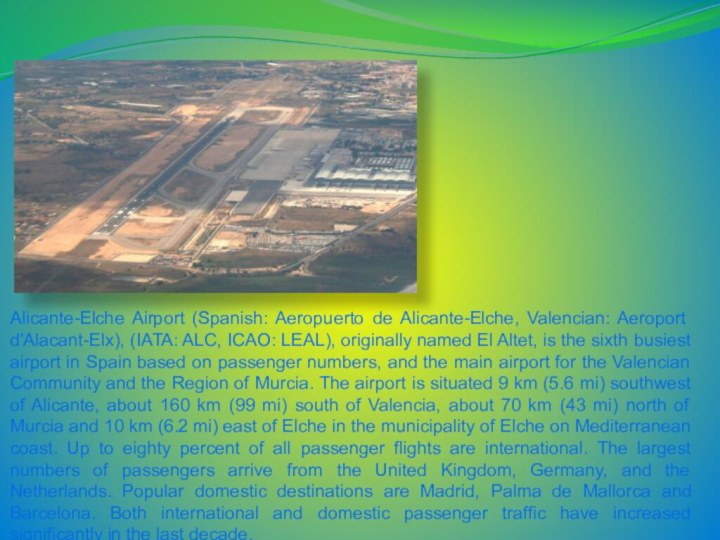
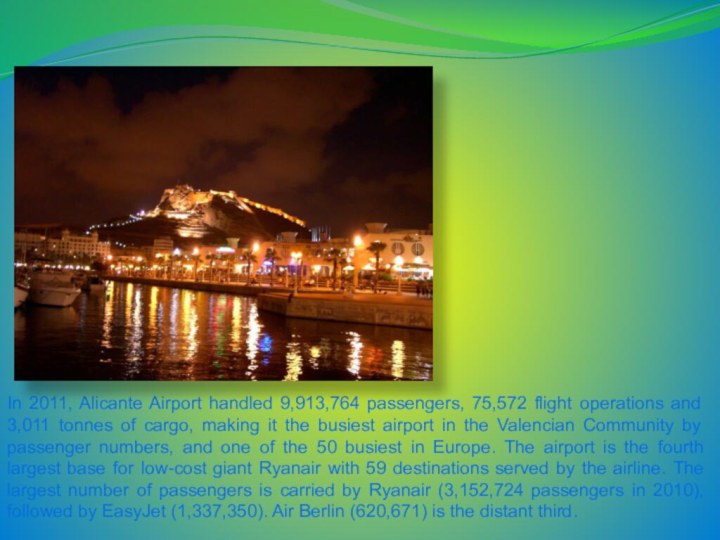
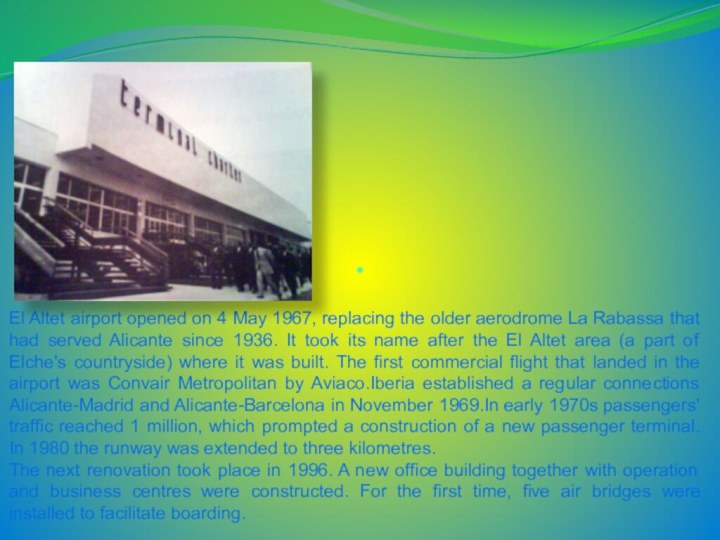
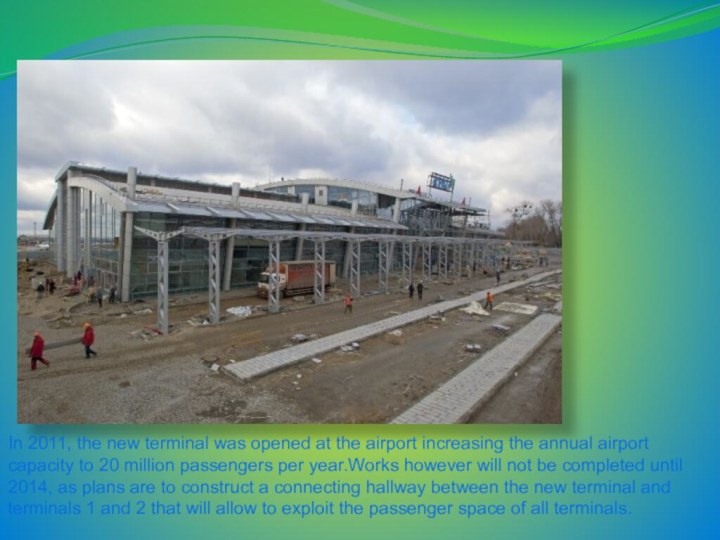

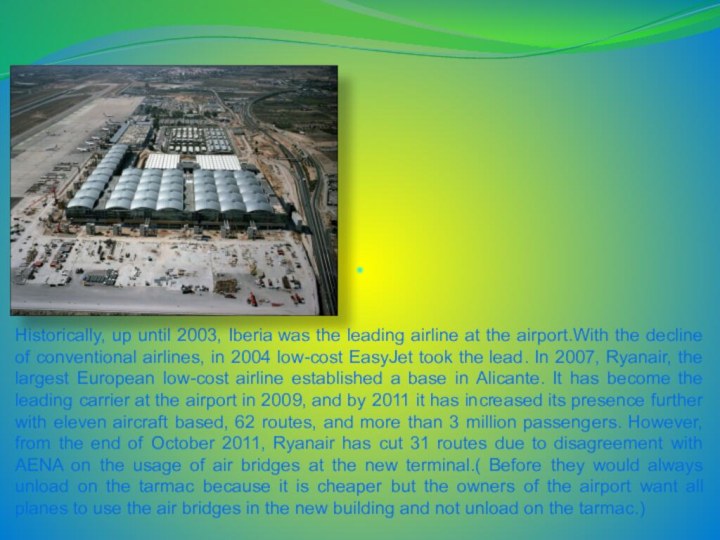
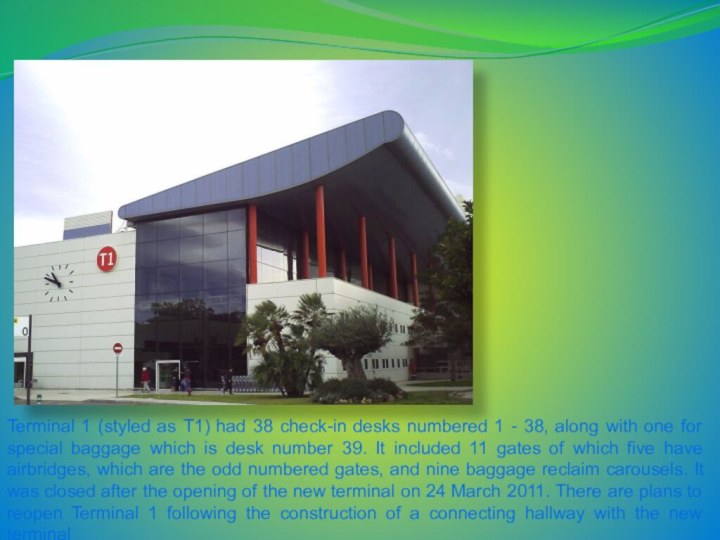
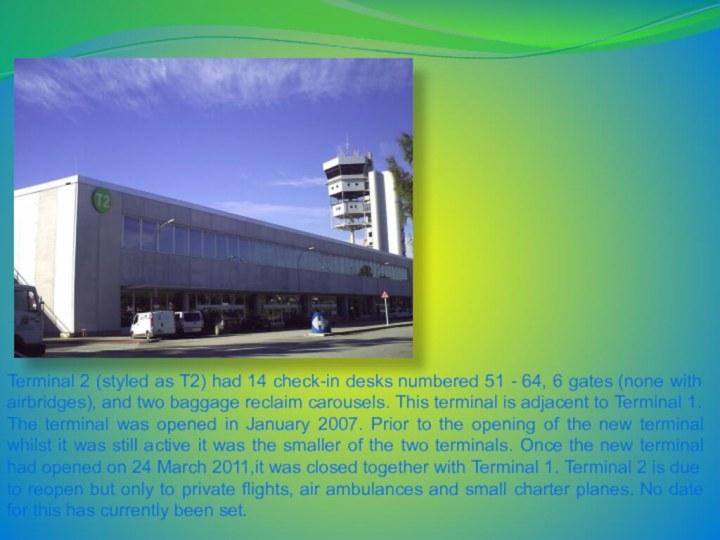
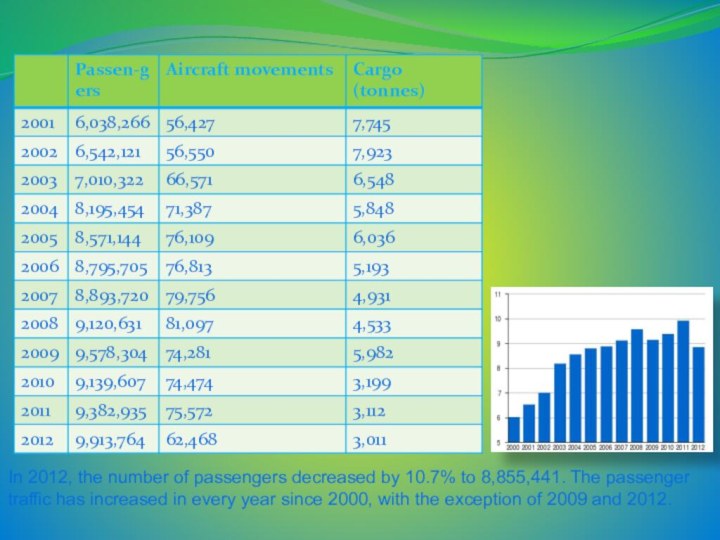
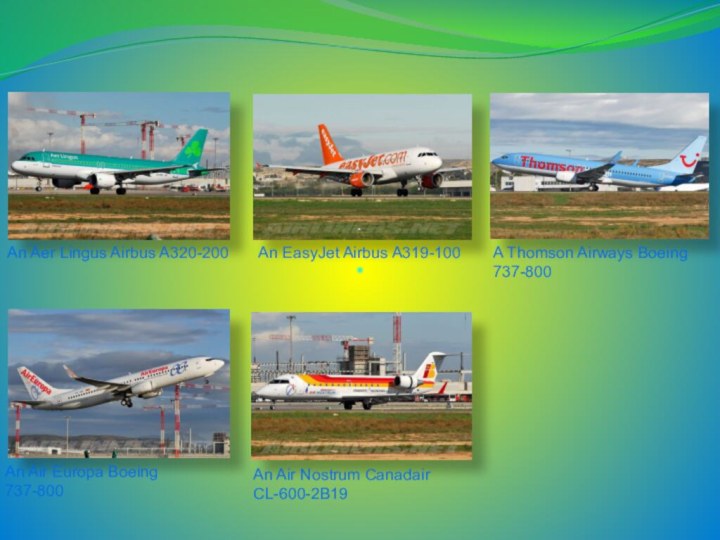
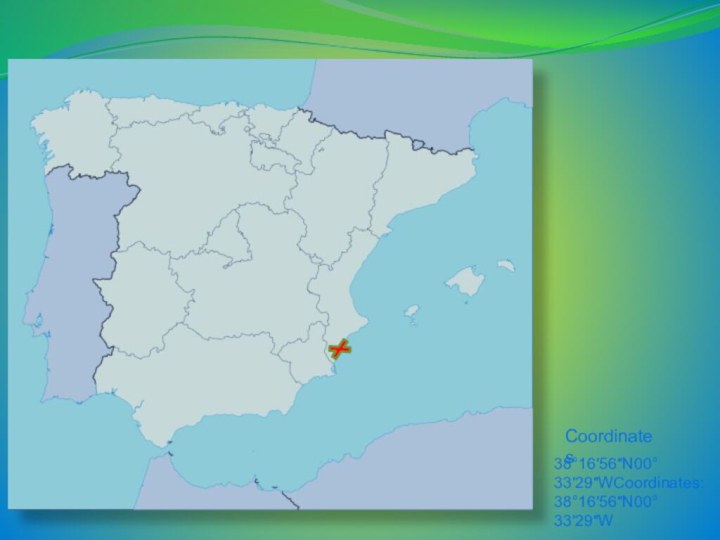
Слайд 3 In 2011, Alicante Airport handled 9,913,764 passengers, 75,572
flight operations and 3,011 tonnes of cargo, making it
the busiest airport in the Valencian Community by passenger numbers, and one of the 50 busiest in Europe. The airport is the fourth largest base for low-cost giant Ryanair with 59 destinations served by the airline. The largest number of passengers is carried by Ryanair (3,152,724 passengers in 2010), followed by EasyJet (1,337,350). Air Berlin (620,671) is the distant third.Слайд 4 El Altet airport opened on 4 May 1967,
replacing the older aerodrome La Rabassa that had served
Alicante since 1936. It took its name after the El Altet area (a part of Elche's countryside) where it was built. The first commercial flight that landed in the airport was Convair Metropolitan by Aviaco.Iberia established a regular connections Alicante-Madrid and Alicante-Barcelona in November 1969.In early 1970s passengers' traffic reached 1 million, which prompted a construction of a new passenger terminal. In 1980 the runway was extended to three kilometres.The next renovation took place in 1996. A new office building together with operation and business centres were constructed. For the first time, five air bridges were installed to facilitate boarding.
















